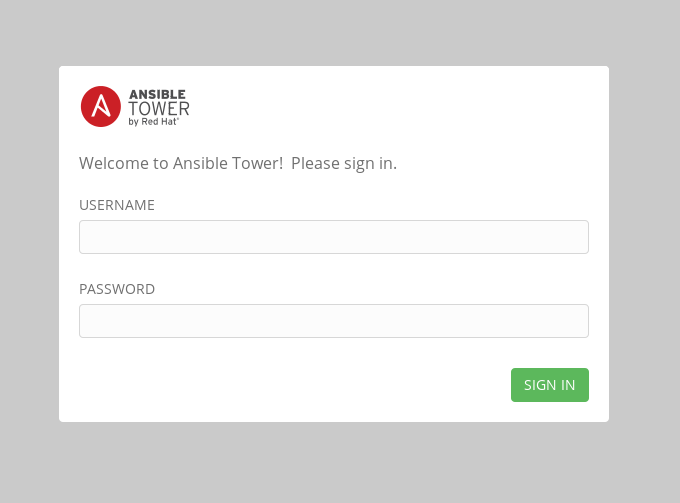
Exercise Description
In this exercise, we are going to configure Red Hat Ansible Tower, so that we can run a playbook.
There are a number of constructs in the Ansible Tower UI that enable multi-tenancy, notifications, scheduling, etc. However, we are only going to focus on the key concepts required for this workshop today.
-
Credentials
-
Projects
-
Inventory
-
Job Template
Section 1: Logging into Ansible Tower and installing the license key
Step 1: Log in
To log in, use the username admin and and the password ansibleWS.

After you login, you will be prompted to request an Ansible Tower license, or browse for an existing license file
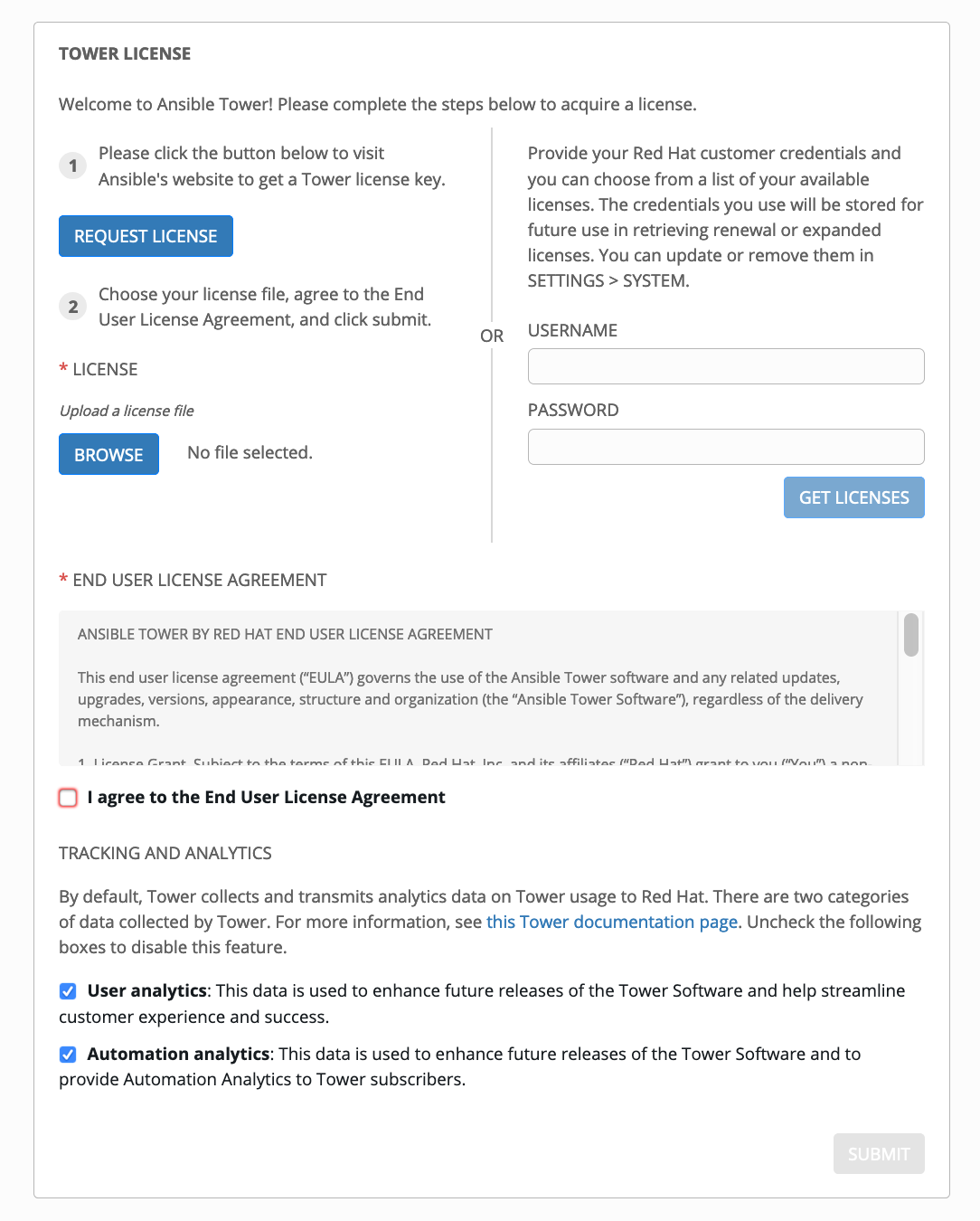
Step 2: Request workshop license
In a separate browser tab, browse to https://www.ansible.com/workshop-license to request a workshop license.
Step 3: Upload Ansible Tower workshop license
Back in the Ansible Tower UI, choose BROWSE ![]() and upload your recently downloaded license file into Ansible Tower.
and upload your recently downloaded license file into Ansible Tower.
Step 4: Accept license agreement
Select "I agree to the End User License Agreement".
Step 5: Submit
Select SUBMIT ![]()
Section 2: Creating a credential
Credentials are utilized by Ansible Tower for authentication when launching jobs against machines, synchronizing with inventory sources, and importing project content from a version control system.
There are many types of credentials including machine, network, and various cloud providers. In this workshop, we are using a machine credential.
Step 1: Select Credentials
Select CREDENTIALS, from the left-side menu bar. ![]()
Step 2: Select Add
Select ADD ![]()
Step 3: Complete the Ansible Tower Credentials form
Complete the form, using the following entries and your private Ansible Tower SSH key. When you paste the key in the PRIVATE KEY field, make sure to include the -----BEGIN RSA PRIVATE KEY----- and -----BEGIN RSA PRIVATE KEY----- lines.
cat ~/.ssh/example-tower && echo
NAME |
Ansible Workshop Credential |
DESCRIPTION |
Machine credential for run job templates during workshop |
ORGANIZATION |
Default |
TYPE |
Machine |
USERNAME |
ec2-user |
PRIVILEGE ESCALATION |
sudo |
PRIVATE KEY |
paste in secret key |
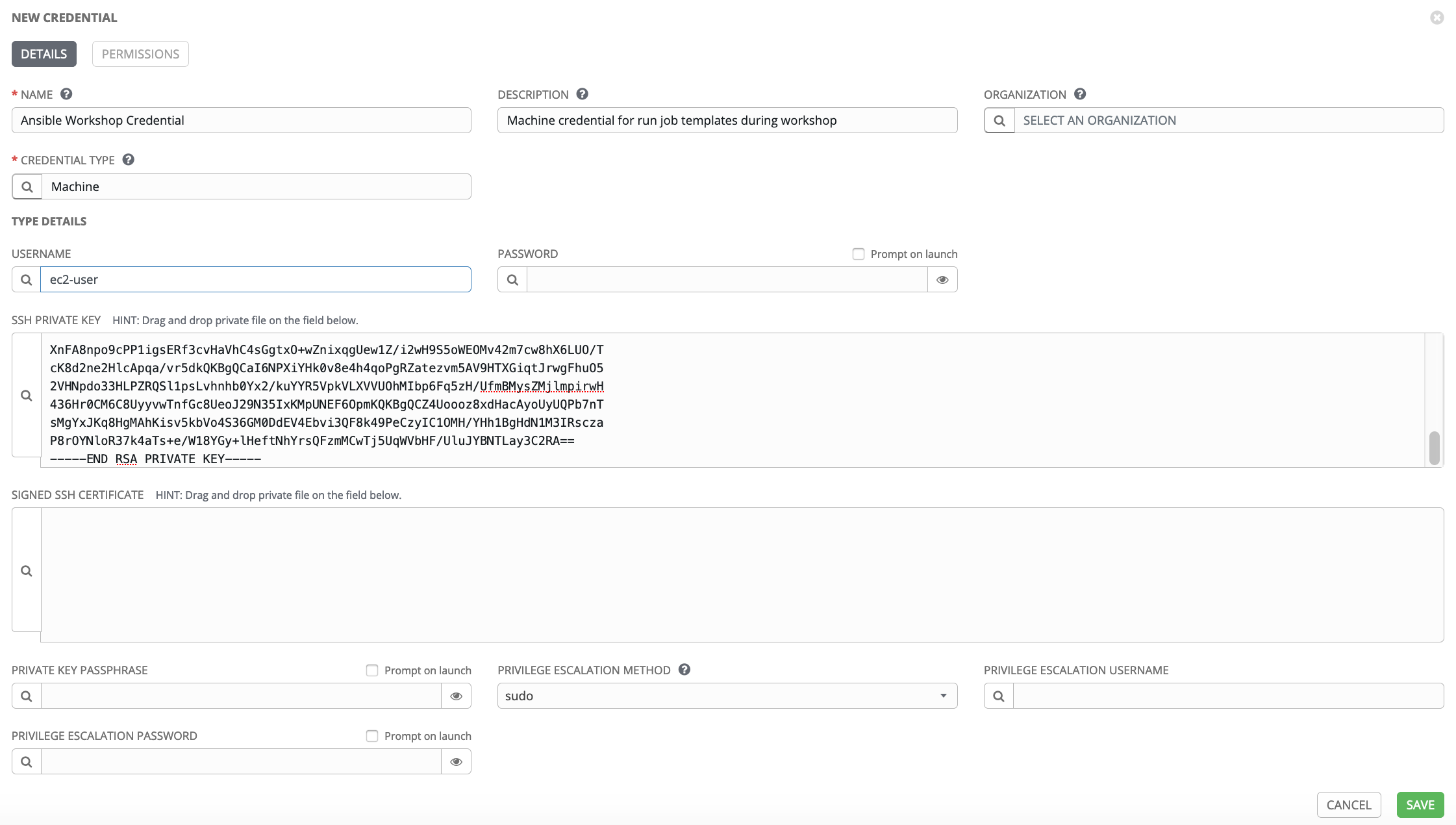
Step 4: Save
Select SAVE ![]()
Section 3: Creating a Project
A Project is a logical collection of Ansible playbooks, represented in Ansible Tower. You can manage playbooks and playbook directories, by either placing them manually under the Project Base Path on your Ansible Tower server, or by placing your playbooks into a source code management (SCM) system supported by Ansible Tower, including Git, Subversion, and Mercurial.
Step 1: Open a new project
Select PROJECTS ![]() .
.
Step 2: Add the project
Select ADD ![]()
Step 3: Complete the Project form
Complete the form using the following entries:
NAME |
Ansible Workshop Project |
DESCRIPTION |
workshop playbooks |
ORGANIZATION |
Default |
SCM TYPE |
Git |
SCM URL |
|
SCM BRANCH |
|
SCM UPDATE OPTIONS |
|

Step 4: Save
Select SAVE ![]()
Section 4: Creating an Inventory
An inventory is a collection of hosts, against which jobs may be launched. Inventories are divided into groups and these groups contain the actual hosts.
Groups may be sourced manually, by entering host names into Ansible Tower, or from one of Ansible Tower’s supported cloud providers.
An Inventory can also be imported into Ansible Tower using the tower-manage command. This is how we are going to add an inventory for this workshop.
Step 1: Navigate to Inventories main link
Select INVENTORIES ![]()
Step 2: Add a new inventory
Select ADD ![]() , and then select Inventory.
, and then select Inventory.
Step 3: Complete the Inventory form
Complete the form, using the following entries:
NAME |
Ansible Workshop Inventory |
DESCRIPTION |
workshop hosts |
ORGANIZATION |
Default |
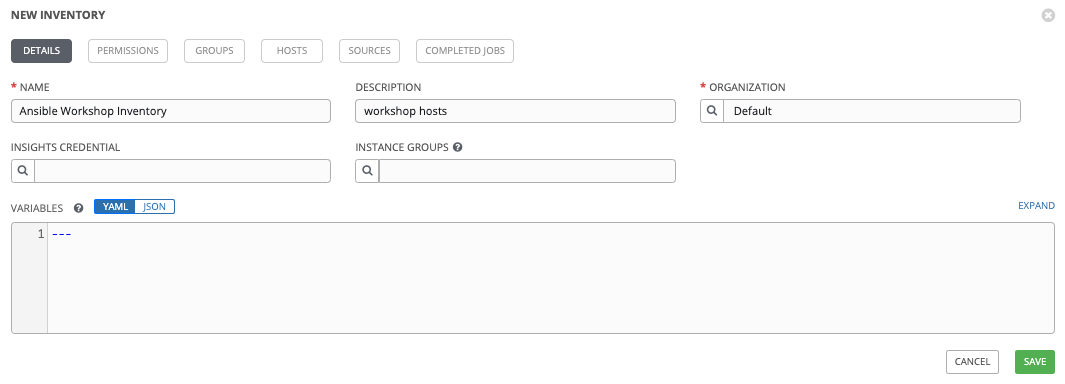
Step 4: Save
Select SAVE ![]()
Step 5: Switch back to your terminal session
Switch back to your terminal session. If by any chance you closed the Red Hat Web Console browser window, open a new one with the URL shown, below:
https://tower-0.example.redhatgov.io:9090/system/terminalStep 6: Import an existing inventory
Use the tower-manage command to import an existing inventory. (Be sure to replace <username> with your actual username.)
sudo tower-manage inventory_import --source=/home/ec2-user/hosts --inventory-name="Ansible Workshop Inventory"
You should see output similar to the following:

Feel free to browse your inventory in Ansible Tower, by selecting Hosts. 
You should now notice that the inventory has been populated with each each of hosts and corresponding inventory.
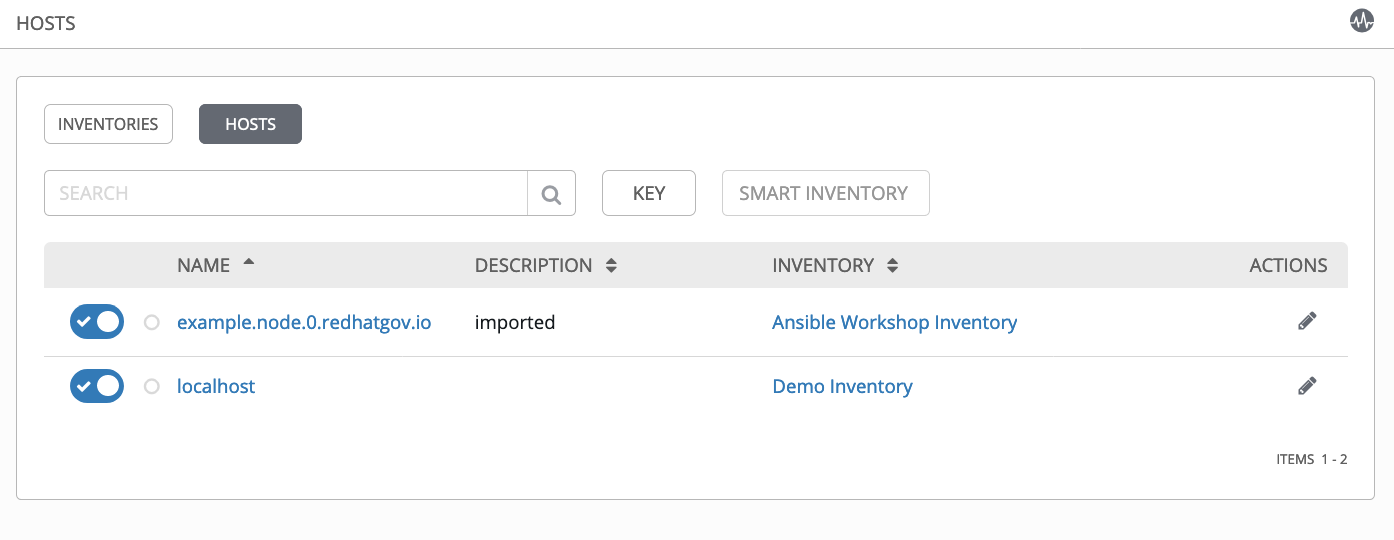
End Result
At this point, we are working with our basic configuration of Ansible Tower. In Exercise 2.2, we will be solely focused on creating and running a job template so you can see Ansible Tower in action.
Workshop Details
| Domain |

|
|
| Workshop | ||
| Student ID |